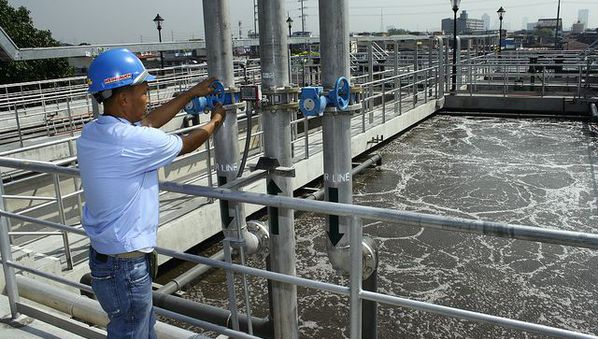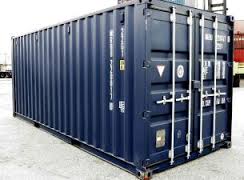
How much are you prepared to pay for water to survive?

Some very exciting news is that NamWater has called a tender for a feasibility study to transport water from a desalination plant at the coast, through a pipe or pipes to Windhoek, at the same time supplying users at mines, towns and villages along the way.
This is seemingly a pro-active move to ensure Windhoek’s water future given the inadequate natural precipitation of the past few years.
This idea is not new. It has been mooted several times before and after Independence. The most recent that I can remember was about 20 years ago when the construction company, Stocks & Stocks worked on some preliminary calculations for the Ministry of Works to pump water from the Omdel Ring to the interior, more or less following the line of the Swakop River up to the Swakoppoort dam.
Finding water for Windhoek in general is also not a new idea. There are several plans on paper, the most significant of which is the transfer of water from the Okanvango River to the Karstfeld and from there through the existing eastern water carrier to the Omatako dam. This infrastructure from the Grootfontein district to Omatako and from there to the Von Bach dam at Okahandja is already in place and has helped often to supplement the water mix for consumption in Windhoek. But the whole system is also plagued by various practical obstacles, and certain conveying inefficiencies along the canal and pipeline structure. The link to the river from Grootfontein to the Okavango does not exist yet.
One may ask why almost thirty years after Independence, there still is no link to the Okavango but I believe the difficulty in reaching a conclusive agreement with the Angolan Goverment may be behind the stall. Also, many of the problems regarding extraction, usage rights, and distribution surfaced only after the Okavango Commisssion, Okacom, was formed and Namibia, Botswana and Angola started talking serious business with each other about the utilisation of the Okavango’s water. In short, nothing that has happened on the ground or at political level, has given a clear signal that one drop of Okavango water will ever reach Windhoek.
But all the ideas and plans for the Okavango were designed before there was a functioning desalination plant at the coast. Thus from a logical perspective, it is a natural extension of the whole process to ask the question: If water can be desalinated in such bulk that it supplies a part of the coastal demand as well as the inland mines, then why can it not be pumped to Windhoek?
This line of thinking opened up many new vistas of which the most important were that city planners had to realise that Windhoek’s water supply will at some future point run dry, and that it is quite possible in theory to pump any amount of water from the coast to the interior. The 350 kilometre distance is not an obstacle, in fact it is a rather short distance compared to the thousands of kilometres many oil pipelines traverse.
The main difference is the value of the commodity that is transferred in those pipelines, and this is where the real catch lies for Namibia, and for the engineers that will eventually be tasked to design, built and commission that pipeline.
There is a certain consumer tolerance regarding the price of water, and over the last few years we protested when the City of Windhoek went mad with it water prices. But what are you prepared to pay for water when your daily existence depends on it?
This is a tough question, one which will probably not be answered satisfactorily until we are at that crisis point where only the very rich can afford utility water with all other people fighting running battles to gain control of the limited water supply that comes from groundwater.
I can carry on and on about the philosophy of water but eventually it serves no purpose. In the earlier years, getting water from the coast to Windhoek was a somewhat crazy concept, entertained only by daydreamers. Unfortunately, we have come to the point where all the options must be investigated and cost will only be a secondary factor.
Let’s look briefly at the technicalities.
The City of Windhoek works on a rule-of-thumb 200 litre per day per resident which includes most of the industrial needs. But the Windhoek population is never stable at any given point. While it continuous to grow, it also shows large seasonal fluctuations. Still, I believe a figure of around 360,000 permanent to semi-permanent residents is a starting point to make some preliminary calculations.
The population size thus demands a water supply of between 800,000 and one million litres per day. In terms of bulk water, this is not a lot, and can easily be supplied by a desalination plant with a capacity of around two million litres a day, to make provision for all the other offtakers along the pipeline.
The design of the pipeline or pipelines is no big deal either. We can actually copy it from existing pipelines in the rest of the world. The cost will be horrendous, but then again, the same question as earlier surfaces: How much are you prepared to pay for water to survive?
These costs will all be part of the capex calculations, and while the total cost of project will be staggering, it will be negligible compared to the opex costs.
To lift one cubic metre of water 100 metres high, one needs roughly 600 kiloJoules of energy. To lift that same volume 1600 metres high (Windhoek’s elevation above sea level), takes 16 times more energy, and that is only for one cubic metre. To lift 1000 cubic metres 1600 metres high, we are now looking at energy requirements that run into the megaJoules.
Any person with the inclination to do so can make these calculations on his or her own. All the physics is known and we have a pretty good idea exactly how much water we will need. The technology is also available for all elements along the production and distribution chain.
This brings me to the essence of any feasibility to determine whether we can desalinate water and pump it to Windhoek. The crucial element that everything else depends on is energy. And in this regard, I hate to break it to you, but we do not have enough energy available to pump water over 350 kms 1600 metres high for 360,000 people.
Therefore, it is only logical that we will need alternative sources of energy, and we will need lots of energy. I suspect Eskom will baulk when we inform them of our energy requirements and I also suspect that alternative energy sources like solar will be inadequate, unreliable and too expensive.
This brings me to one conclusion and one only. If we are serious about bringing water from the coast to the interior in such bulk quantities that it actually becomes our primary source of water supply, there is only one form of electricity generation that will give us enough energy at rates that ordinary water users will be able to afford. That technology is nuclear power.
Whether we like it or not, we have come to the point where we will seriously have to look at putting up a nuclear power station, or even more than one.
With water, the deciding factor is never the quality, availability or transferability of the commodity, but always the cost of moving it. Ultimately, there is no limit to the water in the ocean, but there certainly are limits to what it will cost us to get it to Windhoek, and the most important determinant is the cost of electricity.
We have not other option, we will have to start working on our nuclear energy plans, and soon. Otherwise, the whole NamWater feasibility is just another dead duck. No electricity, no water, it is as simple as that.
Expert response to editor’s reflection on water from the coast to the interior:
Dear Mr. Steinmann,
It was great fun to read your article.
Attached some remarks, especially I would like that the actual values, the included maths and science have to be put right.
Please also note the feasibility study established the additional water demand for 2050. The total water demand 2050, traditional resources and desalinated water, for the area around Windhoek is roughly double that.
All consumption is therefore based on complete other figures.
You also have to keep in mind that electrical power is not only necessary for the “water lift” but for the desalination process equally.
Still that will only amount for 68MW in case the missing water(deficit) will be produced by desalination for the Central Coastal Area, For the Area around Windhoek and en-route users.
Why you write this an amount not being possible to be available (even to 2050).
Promoting nuclear energy is quite strange at this times, the smaller NP plants are coming with 1GW and anything between 6 t0 10 billion US$?
Namibia is blessed with Solar Power and even Windpower!!!!! to care for this project.
If you are interested in a fact based publication I will always be available
Best regards
Günther Hörlesberger Prof. Dipl. Ing.
Project Manager
Published verbatim – Ed.
12 November 2019










































